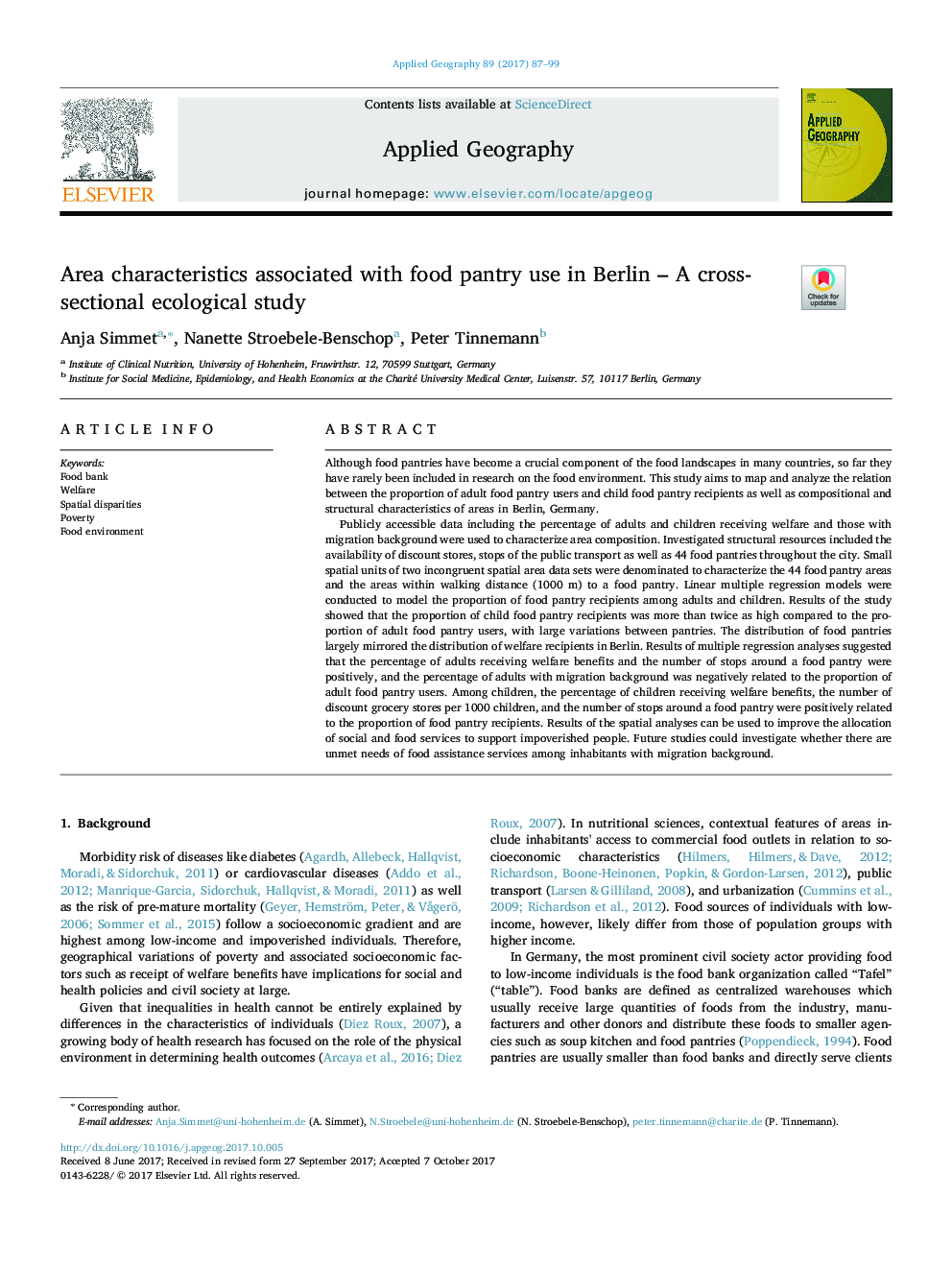| Article ID | Journal | Published Year | Pages | File Type |
|---|---|---|---|---|
| 6538385 | Applied Geography | 2017 | 13 Pages |
Abstract
Publicly accessible data including the percentage of adults and children receiving welfare and those with migration background were used to characterize area composition. Investigated structural resources included the availability of discount stores, stops of the public transport as well as 44 food pantries throughout the city. Small spatial units of two incongruent spatial area data sets were denominated to characterize the 44 food pantry areas and the areas within walking distance (1000Â m) to a food pantry. Linear multiple regression models were conducted to model the proportion of food pantry recipients among adults and children. Results of the study showed that the proportion of child food pantry recipients was more than twice as high compared to the proportion of adult food pantry users, with large variations between pantries. The distribution of food pantries largely mirrored the distribution of welfare recipients in Berlin. Results of multiple regression analyses suggested that the percentage of adults receiving welfare benefits and the number of stops around a food pantry were positively, and the percentage of adults with migration background was negatively related to the proportion of adult food pantry users. Among children, the percentage of children receiving welfare benefits, the number of discount grocery stores per 1000 children, and the number of stops around a food pantry were positively related to the proportion of food pantry recipients. Results of the spatial analyses can be used to improve the allocation of social and food services to support impoverished people. Future studies could investigate whether there are unmet needs of food assistance services among inhabitants with migration background.
Related Topics
Life Sciences
Agricultural and Biological Sciences
Forestry
Authors
Anja Simmet, Nanette Stroebele-Benschop, Peter Tinnemann,
